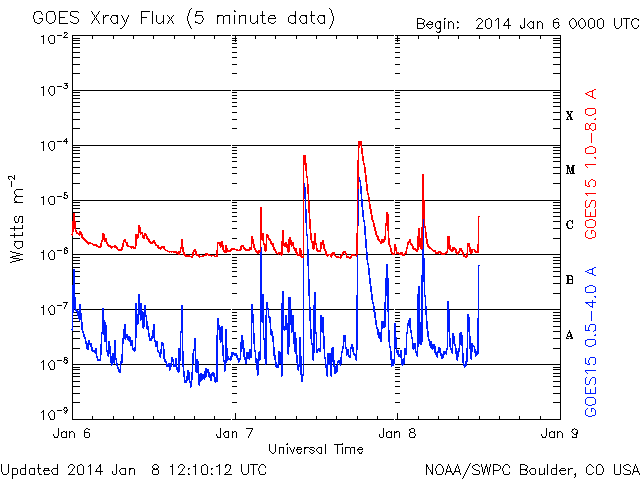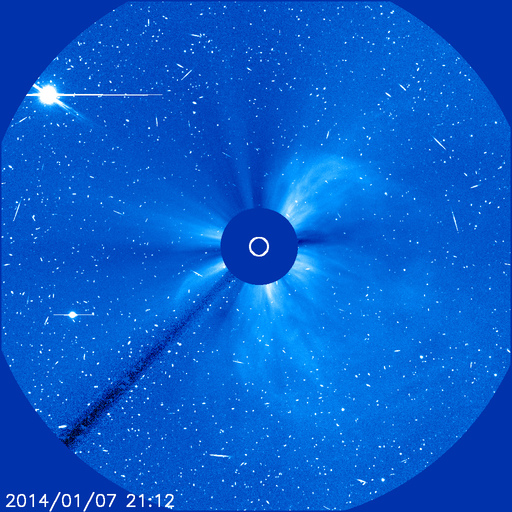Space Weather Alert - 8th January 2014
What Has Happened?
A fast Coronal Mass Ejection (CME) was observed leaving the Sun around 18:30 UT on 7th January. It was associated with an X1-class (moderately strong) solar flare from near the centre of the solar disc, and it appears to be heading towards the Earth. The arrival at Earth is most likely to be sometime on 9th January.
This CME is expected to cause a geomagnetic storm, increasing the chance of viewing the aurora borealis (or australis if you live in the southern hemisphere) for the next few nights, depending where you are in the world when the storm starts.
In the UK the best chance of seeing the aurora (Northern Lights) will be in Scotland, and the far north of England and Northern Ireland. If the CME couples strongly to the Earth's magnetic field the aurora may be visible further south.
Whilst there is a slight chance for viewing the aurora in the early hours of the 9th, a display is more likely on the nights of the 9th and 10th.
As well as enhanced geomagnetic activity, conditions for optimal aurora viewing include a dark cloud-free sky, lack of light pollution from urban areas, and a clear line of sight towards the northern horizon. The further south you are, the more critical it is that you have a clear view of the horizon (you'll need to look towards the southern horizon if you are in the southern hemisphere).
According to the UK Met Office it's looking like the rain will have cleared through giving some cloud breaks Thursday evening particularly in Eastern Scotland and NE England. To get a more detailed weather forecast for your area head to the Met Office web page
Sign-up to receive Geomagnetic Disturbance Alert emails.
Follow us on Twitter:
Follow @BGSauroraAlert for more occasional aurora alerts.
Follow @BGSspaceWeather for daily space weather forecasts.
Glossary
- BGS
- The British Geological Survey is one of the Natural Environment Research Council's Research Centres.
CME or Coronal Mass Ejection- The eruption of a portion of the outer atmosphere of the Sun into space, caused by rapid changes in its magnetic field. Often occurs along with a solar flare.
- Flare
- Energy released by the explosive reorganisation of magnetic fields within the Sun's atmosphere.
Solar Wind- The ever-present expansion of the Sun’s hot outer atmosphere into the solar system, which carries space weather within it.
Sunspot- A region of intense magnetic field in the Sun's visible outer atmosphere often associated with flares and CMEs.




